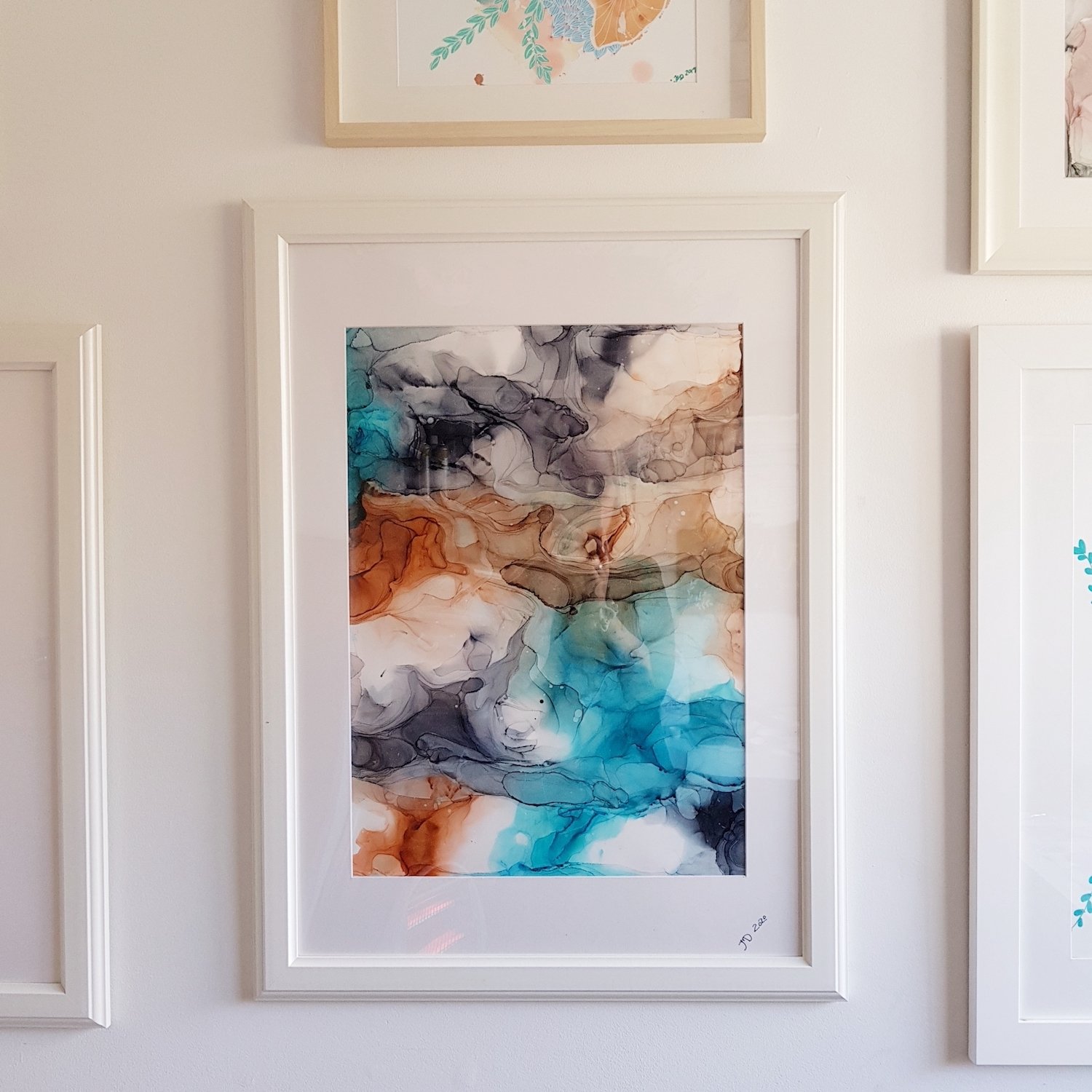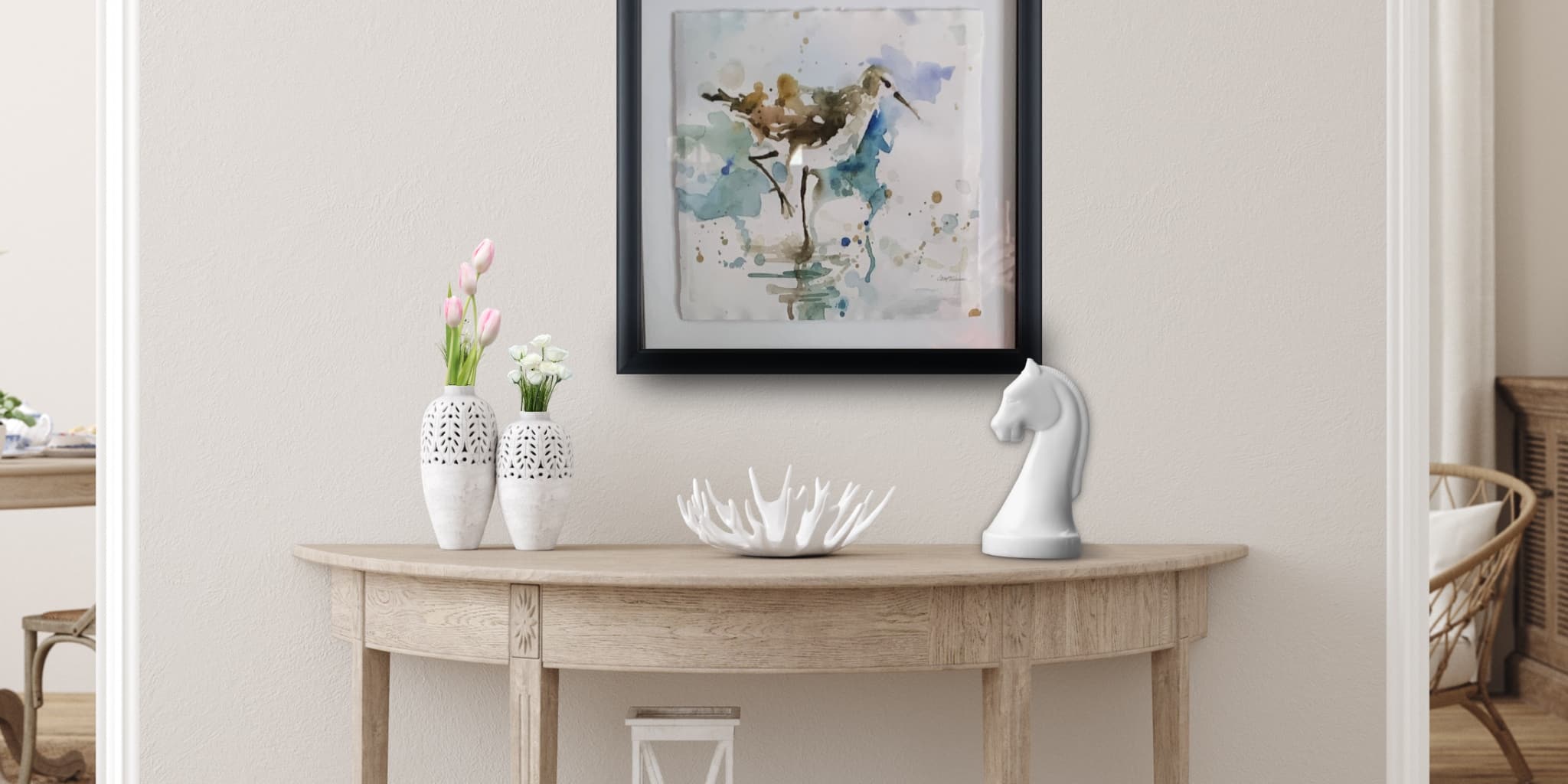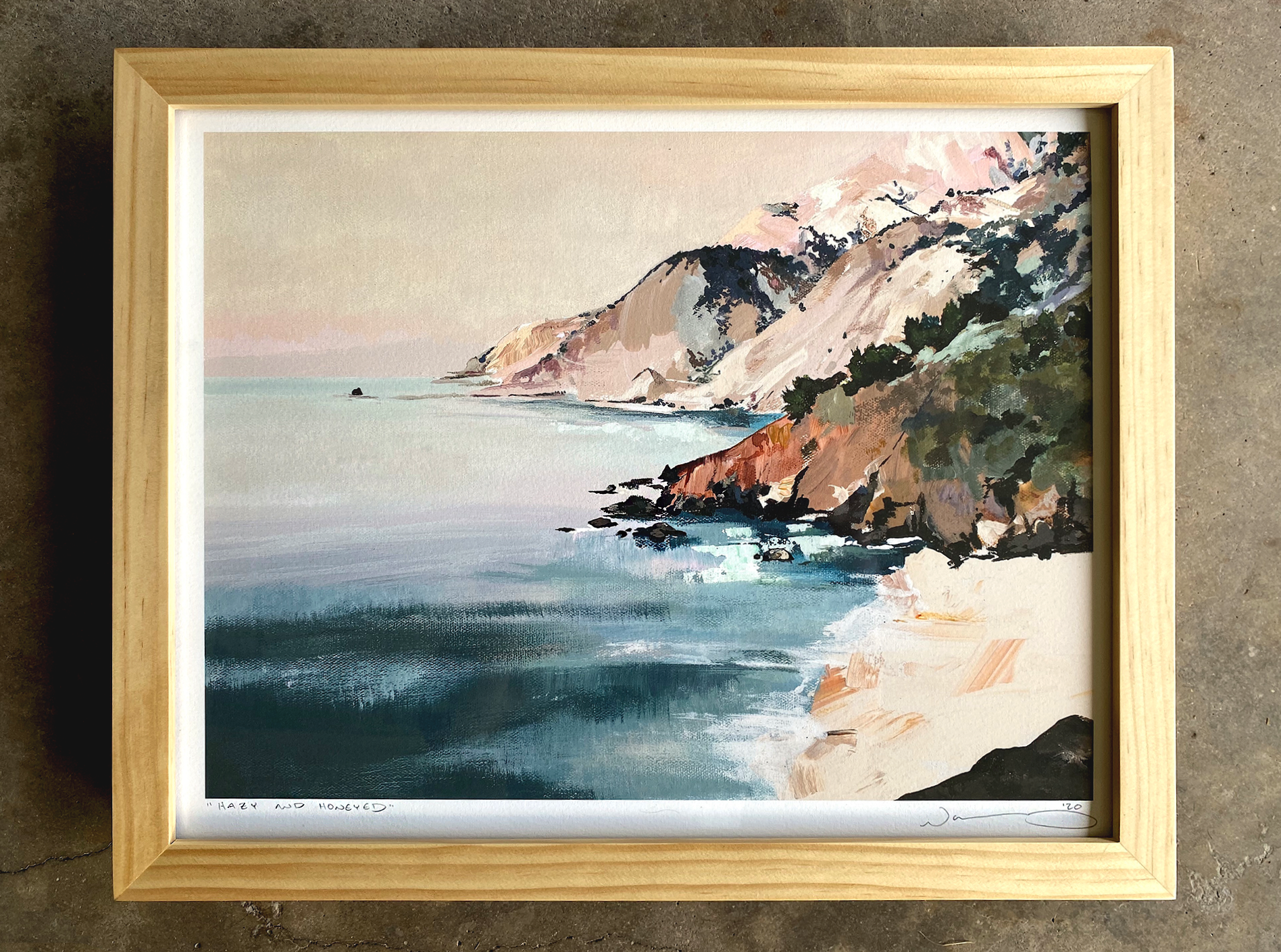Watercolor paintings possess a unique charm and delicacy that require special consideration when framing. The process of framing not only protects the artwork but also enhances its aesthetic appeal, allowing it to be displayed to its best advantage. In this comprehensive guide, we will explore the essential steps and considerations for successfully framing a watercolor painting. From selecting the right materials to mastering the techniques, you will learn how to showcase your watercolor masterpiece with elegance and sophistication.

Choosing the Right Frame
Choosing the right frame is a critical first step in the framing process. The frame should complement the painting without overpowering it, drawing attention to the artwork itself. When selecting a frame, consider the style and color palette of the watercolor. For instance, a traditional wooden frame might enhance a classic landscape, while a sleek metal frame could suit a modern abstract piece. It’s important to strike a balance between the frame and the painting, ensuring that they work together harmoniously. The frame’s color should ideally pick up a hue from the painting or provide a neutral backdrop that allows the artwork to stand out. Additionally, consider the room where the painting will be displayed, as the frame should also coordinate with the surrounding decor. Custom framing services offer a wide range of options, allowing you to find the perfect match for your watercolor painting.
Selecting the Mat Board
The mat board serves both a protective and aesthetic function in the framing process. It creates a visual boundary between the painting and the frame, preventing the artwork from touching the glass and ensuring that the focus remains on the painting. The choice of mat board color and size can dramatically affect the presentation of the watercolor. A white or off-white mat is a classic choice that provides a clean, unobtrusive border. However, colored mats can also be used to highlight specific tones within the painting, adding an additional layer of depth and interest. When selecting a mat, ensure it is acid-free to prevent any damage or discoloration to the watercolor over time. Double mats, where a thin line of a second color peeks out from beneath the primary mat, can add sophistication and complexity to the display.

Protecting the Watercolor with Glass
Protecting a watercolor painting with the right type of glass is crucial for preserving its delicate pigments and paper. Regular glass provides basic protection, but ultraviolet (UV) filtering glass or acrylic can safeguard the painting from harmful UV rays that can cause fading and deterioration over time. Museum glass is another excellent option, offering superior clarity and reduced glare while providing UV protection. When choosing between glass and acrylic, consider factors such as weight and breakability. Acrylic is lighter and shatter-resistant, making it suitable for larger paintings or frames that will be frequently moved. However, it can scratch more easily than glass. Anti-reflective coatings can also be applied to both glass and acrylic to minimize glare and ensure that the watercolor can be viewed clearly from any angle.
Mounting the Watercolor Painting
Mounting the watercolor painting correctly is essential for maintaining its condition and appearance. There are several methods for mounting, including hinging with archival tape, dry mounting, and using corner pockets. Hinging with archival tape is a preferred method because it is reversible, meaning the painting can be removed from the mount without damage if needed. Use acid-free, archival-quality tape to create small hinges at the top corners of the painting, allowing it to hang naturally within the frame. Avoid taping all sides of the painting, as this can cause buckling or warping. Dry mounting, which involves adhering the entire back of the painting to a mounting board using heat-activated adhesive, provides a flat, smooth appearance but is not recommended for original artworks due to its irreversible nature.

Assembling the Frame
Assembling the frame involves carefully placing all the components together to create a cohesive and protective display for the watercolor painting. Begin by cleaning the glass or acrylic thoroughly to remove any dust or fingerprints. Lay the frame face down and place the cleaned glass or acrylic into the frame. Next, place the mat board, ensuring it is centered and straight. Carefully position the mounted watercolor painting on top of the mat board, aligning it precisely. If you are using spacers, insert them now to keep the glass or acrylic from touching the painting. Finally, secure the backing board in place, using frame clips or points to hold everything together firmly. Make sure all layers are tight and secure but not overly compressed, as this can damage the painting.
Hanging and Displaying the Framed Painting
Hanging and displaying the framed watercolor painting requires careful planning to ensure it is showcased to its best advantage. Choose a location that provides good lighting but avoids direct sunlight, which can cause fading even with UV-protective glass. Consider the height at which the painting will be hung; eye level is generally ideal for viewing. Use appropriate hanging hardware, such as D-rings and picture wire, to secure the frame to the wall. Ensure that the hardware can support the weight of the frame, especially if it is large or heavy. If hanging multiple pieces, plan the arrangement beforehand to create a balanced and harmonious display. Using a level helps to ensure that the painting hangs straight. Additionally, think about the surrounding decor and how the framed watercolor will interact with other elements in the room.

Caring for the Framed Watercolor
Caring for a framed watercolor painting involves regular maintenance to preserve its appearance and longevity. Dust the frame and glass periodically using a soft, lint-free cloth to prevent the accumulation of dust and dirt. Avoid using cleaning solutions on the glass, as these can seep under the edges and potentially damage the painting. Instead, use a dry or slightly dampened cloth. Inspect the frame periodically for signs of wear or damage, such as loose joints or scratches, and address any issues promptly to prevent further deterioration. Ensure that the painting remains in a stable, controlled environment, avoiding areas with high humidity or significant temperature fluctuations, which can cause the paper to expand or contract. If you need to move the painting, handle it with care, supporting both sides of the frame to avoid putting stress on the corners.

Conclusion
Framing a watercolor painting is both an art and a science, requiring careful selection of materials and meticulous attention to detail. From choosing the right frame and mat board to protecting the artwork with appropriate glass and mounting it securely, each step plays a crucial role in preserving and enhancing the watercolor’s beauty. Proper assembly and thoughtful display ensure that the painting is showcased to its fullest potential, while regular care and maintenance protect it from damage and deterioration. By following the comprehensive guide provided here, you can confidently framing a watercolor paintingwatercolor painting, creating a stunning presentation that highlights the delicate artistry and vibrant colors of the medium.








